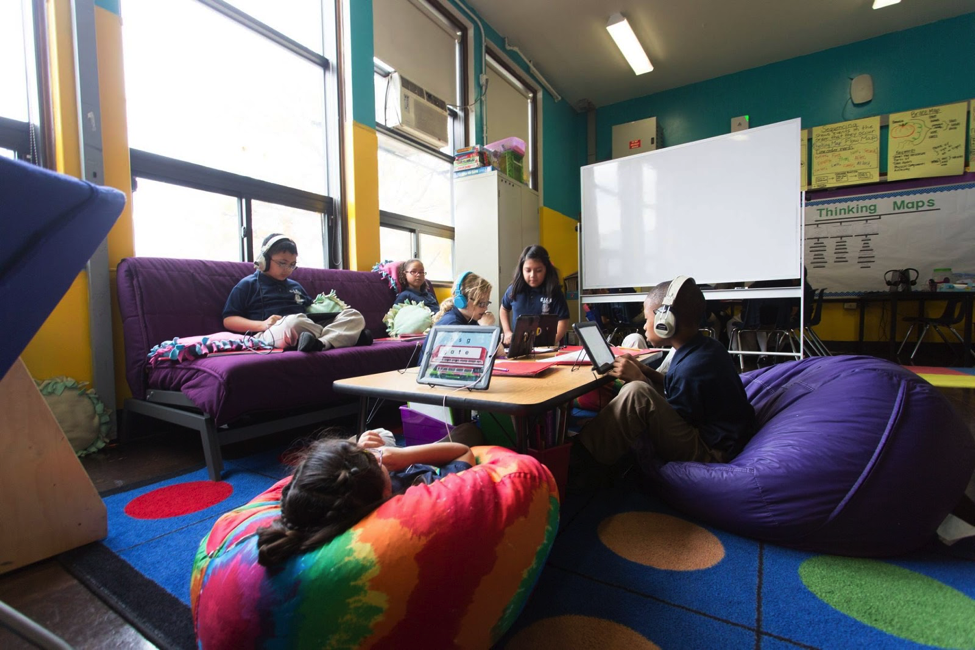Schools Should Be Cathedrals of Learning — from blogs.edweek.org by Sajan George
Excerpts (emphasis DSC):
What may surprise us though is how the underlying elements of these beautiful designs can follow certain principles–what Goldhagen refers to as “embodied metaphors.” These embodied metaphors suggest, reinforce, and captivate an action sequence from us that is both cognitive and non-cognitive in response. Examples of these natural, unconscious design principles that evoke conscious responses include:
- Natural landscapes settle a person’s elevated heart rate after just 20 seconds
- Bright lights stimulate creativity and bright ideas
- Closed spaces offer a sense of refuge
- Expansive spaces invite exploration
- Colors can heighten (red for anger) and dampen (pink for calm) emotions
- Sharp edge surfaces suggest retreat
- Curving surfaces suggest approach
- Repeating patterns with respites from that same pattern can stimulate problem-solving capacity
This has profound implications for the built environments of school buildings. Goldhagen cites one study of 34 different British schools where the six design parameters of color, choice, complexity, flexibility, light, and connectivity affected a student’s learning progress by 25 percent! The difference in learning between the best and worst designed classrooms was equal to the progress of an average student over an entire academic year.
…
The difference in learning between the best and worst designed classrooms was equal to the progress of an average student over an entire academic year.
Too often, children in poverty live in dwellings that are cognitively dulling environments, often limited in natural sunlight, creative use of color, changes in texture, or sightlines to landscaping, greenery, or vegetation. Low-income housing often wrings out the least costly, most expedient design. These children of poverty often leave such home dwellings and enter school buildings and classrooms each day that are equally devoid of cognitive inspiration. Where is the inspiration in uniform rows of wooden desks and plastic chairs?
How well does your school’s built environment contribute to human flourishing?









